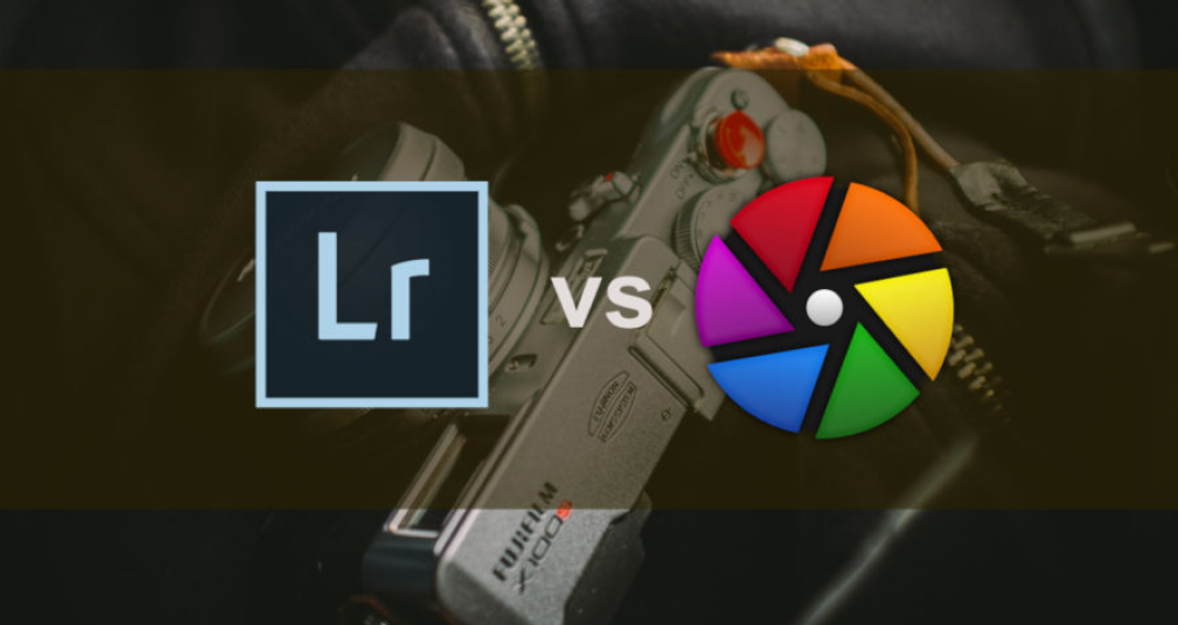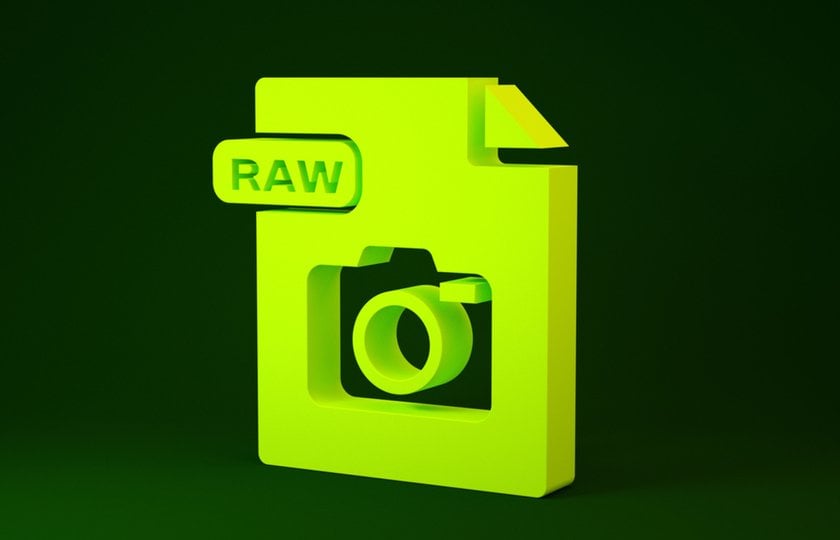Rawtherapee Vs Lightroom: A Decision-Making Guide
August 01, 2025

For photographers, the RawTherapee vs Lightroom showdown is a classic: free power or paid polish?
If you’ve started editing photos, you’ve probably typed “Lightroom vs RawTherapee” into Google more than once. And honestly, it’s a good question to ask. Both tools are strong, but they’re also very different. One is polished and beginner-friendly. The other is raw, technical, and completely free.
So which one’s better? It depends on what you need, and how much you’re willing to learn (or pay). In this guide, we’ll break things down clearly, without tech jargon. You’ll get real answers, not vague advice. Let’s find the photo editor that fits your workflow.
What Exactly Is RawTherapee?
 RawTherapee is free software built to process raw photo files. It’s open-source, which means it’s created and maintained by a community of developers and photographers who care about image quality and full control.
RawTherapee is free software built to process raw photo files. It’s open-source, which means it’s created and maintained by a community of developers and photographers who care about image quality and full control.
It’s packed with advanced features:
Tone mapping
Lab color adjustments
Wavelet sharpening
Highlight and shadow recovery
And yes, it’s powerful—but not necessarily friendly. The interface looks a bit outdated. If you’re used to modern design, RawTherapee might feel clunky at first. But once you understand it, you’ll see why so many users stick with it.
RawTherapee reviews often say the same thing: it’s not flashy, but it gets the job done beautifully—especially for photographers who want full control over every pixel.
Your AI-Powered Photo Editor for MacOS and Windows
Discover Now!And What About Lightroom?
 Adobe Lightroom is part of the Creative Cloud suite. Unlike RawTherapee, it’s not free—you’ll need to pay monthly. But for many users, it’s worth it.
Adobe Lightroom is part of the Creative Cloud suite. Unlike RawTherapee, it’s not free—you’ll need to pay monthly. But for many users, it’s worth it.
Lightroom is known for:
Clean design
Fast workflow
Cloud syncing
Strong organizing tools
Seamless connection with Photoshop
If you shoot a lot, manage client photos, or need to find an image fast, Lightroom’s cataloging system is a game-changer. You can include keywords, ratings, flags, and even facial recognition. It also boasts a whole lot of time-saving features, such as presets and batch editing. So if speed and convenience are important, Lightroom will likely be home sweet home.
Side-by-Side Comparison
 Let’s break down some key differences in a simple table.
Let’s break down some key differences in a simple table.
Feature | Lightroom | RawTherapee |
Price | Subscription only | 100% free |
Platform | Windows, macOS, mobile | Windows, macOS, Linux |
User Interface | Modern, beginner-friendly | Functional but outdated |
Editing Tools | Balanced for pros & beginners | Deep, technical editing tools |
Cataloging | Built-in and powerful | No built-in catalog |
Presets | Huge marketplace and support | Limited, but editable profiles |
Speed | Fast with GPU support | Slower on older machines |
Lightroom leans toward speed and convenience. RawTherapee leans toward flexibility and customization.
Lightroom: Perfect for Speed and Simplicity
If you’re just getting into photography—or if you’re editing large batches of photos for clients—Lightroom is a solid choice.
Here’s what makes Lightroom ideal for many users:
You can edit dozens of images at once with sync tools
Built-in presets help you create consistent styles
Cloud syncing means you can edit on your phone or tablet
It integrates smoothly with Photoshop for deeper retouching
It’s also easy to learn. You don’t need to be a pro. And if you get stuck, there are hundreds of tutorials online. Many people also love how organized Lightroom keeps their photos. If you’re juggling thousands of images, that’s a huge win.
RawTherapee: Best for Creative Control on a Budget
RawTherapee is not for everyone—and that’s okay. But if you love fiddling with tone curves, playing with fine details, or getting the exact look you want, this might be your dream tool.
You get features that Lightroom simply doesn’t offer:
Lab color mode (used in scientific color correction)
Wavelet contrast and detail tools
Fine-tuned noise reduction
Custom sharpening algorithms
And the best part? You never have to pay for it. Photographers who don’t need organizing tools—or who organize manually using folders—often stick with RawTherapee. It forces you to be hands-on, but that can also be part of the fun.
Which Software Handles RAW Files Better?

RAW files are the heart of professional photography. They hold more data, give you better control, and let you push edits further without quality loss. However, not all editors treat RAW files equally. Here’s how each tool handles RAW processing.
RawTherapee gives you deep control over RAW data. You get advanced sharpening, highlight recovery, and noise reduction features. It’s ideal if you want full control without automated decisions.
Lightroom, on the other hand, offers speed and consistency. Its built-in RAW engine (Adobe Camera Raw) delivers clean results with minimal effort. It’s perfect when you need quick turnarounds or batch edits.
If your goal is maximum image quality with detailed adjustments, RawTherapee is powerful—but the learning curve is real. Lightroom is faster for most workflows and supports more camera profiles right out of the box.
Want a Balance? Try Something Different
 What if you want power and simplicity? A good middle-ground between Lightroom and RawTherapee is Luminar Neo. It’s modern, smart, and still gives you creative freedom.
What if you want power and simplicity? A good middle-ground between Lightroom and RawTherapee is Luminar Neo. It’s modern, smart, and still gives you creative freedom.
You get layers, masks, and AI tools—without needing to memorize a bunch of sliders. Luminar is popular among photographers who don’t want a subscription but still want professional-looking results.
How AI Is Changing Editing
 Here’s the thing—AI is quickly becoming part of everyday editing. Lightroom is starting to add some AI features (like subject masking and auto adjustments), but it’s still a bit behind the curve. RawTherapee, being open-source, doesn’t include AI tools at all. Everything is manual. But new tools like light effect AI are changing the game. They let you add realistic lighting effects in seconds—no need to play with curves and contrast forever.
Here’s the thing—AI is quickly becoming part of everyday editing. Lightroom is starting to add some AI features (like subject masking and auto adjustments), but it’s still a bit behind the curve. RawTherapee, being open-source, doesn’t include AI tools at all. Everything is manual. But new tools like light effect AI are changing the game. They let you add realistic lighting effects in seconds—no need to play with curves and contrast forever.
And if you ever tried to remove a messy background manually in Photoshop or RawTherapee, you know it can take ages. Now? Tools like this AI background remover do it with a single click. These types of tools are a huge time-saver for product photos, portraits, or social content.
Common Editing Scenarios—Which One Wins?
 Let’s look at how each software handles common photo editing situations:
Let’s look at how each software handles common photo editing situations:
1. Wedding or Event Photographer
You shoot 800 images in one day. You need fast culling, batch editing, and client delivery.
Winner: Lightroom
Why? It’s built for speed and consistency.
2. Landscape Hobbyist
You shoot raw images and enjoy editing one photo at a time to perfection.
Winner: RawTherapee
Why? You get full control, and it’s completely free.
3. Social Media Creator
You need fast, eye-catching edits for reels, ads, or Instagram.
Winner: Lightroom
Why? Smart filters, quick edits, and AI tools save time.
Still Torn Between the Two?
 If RawTherapee feels too complex or dated, there are other tools out there that might suit you better. You might like this RawTherapee alternative if you’re looking for similar depth with a better interface.
If RawTherapee feels too complex or dated, there are other tools out there that might suit you better. You might like this RawTherapee alternative if you’re looking for similar depth with a better interface.
And if Lightroom’s subscription price is making you think twice, you’re not alone. Plenty of users are now exploring Lightroom alternative free options that offer solid results without monthly fees.
What the Community Says
Here’s the thing: community feedback can be brutally honest—and incredibly helpful. Many RawTherapee reviews come from photographers who love having total control. They praise its sharpening engine, detail recovery, and customizable workflow. But they also admit it can feel slow and intimidating at first.
People who use Lightroom usually appreciate how smooth and convenient it is, especially when handling large batches of photos. It’s known for being reliable and easy to work with. That said, some users do get annoyed by Adobe’s subscription pricing.
Wrapping Up
So, which should you choose? It depends on what matters most to you.
Want a clean, easy-to-learn editor with organizing tools? Go with Lightroom.
Want deep control and zero cost? Try RawTherapee.
Want modern tools with a smart, flexible interface? Explore Luminar Neo or similar editors.
What’s important is finding software that matches your style, budget, and needs. Don’t be afraid to try a few. Most have free trials, and your best choice might surprise you.





